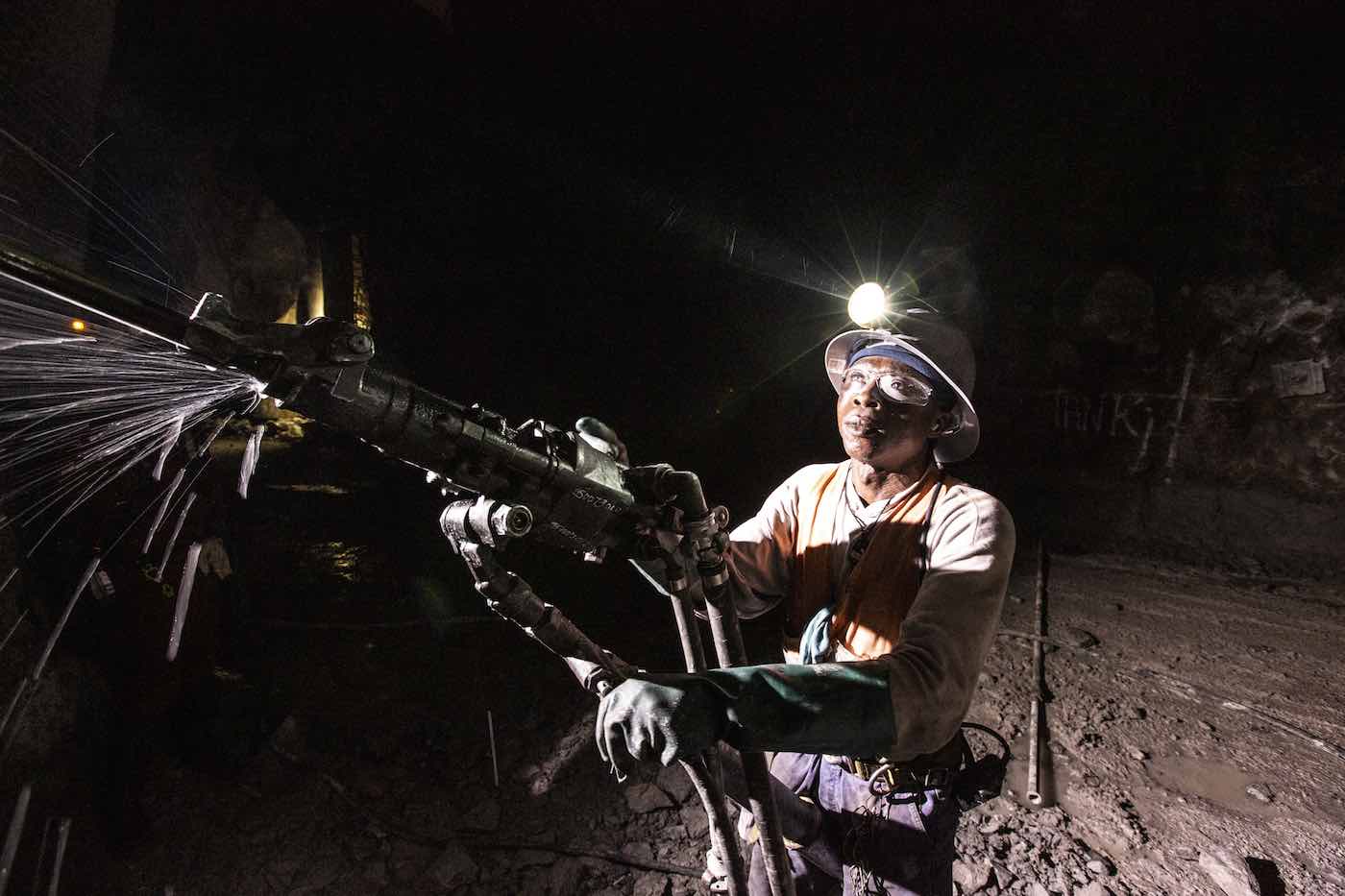
The resurgence of silica dust conversations in mining circles is not a thing of the past rather a silent pandemic that has continued for years. The present-day occupational exposure of silica dust has been accelerated by technological advancement and mechanization. Silica dust has been present since the inception of hard rock mining. Silica dust is a natural mineral found in the earth’s crust and consists of silicon and oxygen. Its most common form is quartz and when it is broken into very fine dust particles beyond the naked eye it is known as respirable crystalline silica. Anyone who breathes in these dust particles is at risk of airway and lung damage. The main diseases associated with silica dust include lung cancer, silicosis and chronic obstructive pulmonary disorder (COPD). Inhalable particles settle in the nose and throat whereas respirable particles settle in the alveoli and cause irritation to the lungs. The areas of concern for silica dust in underground rock mining are different but what is common to all of them is respirable crystalline silica dust, which becomes airborne and can be inhaled by workers.
1) Conveyors and materials handling – The motion of conveyor belts transporting ore out of the mine can cause airborne dust. Material spillage which generates dust mostly happens at transfer points. Enclosures, containment curtains and extraction ventilation has been used for dust suppression at transfer points. However, the best method is fitting sprays to transfer points and GRT has products that can be utilized in the spraying dust suppression technique. GRT: Activate UG super-activates water causing the water to bind, agglomerate and coat fine dust particles which allows for dust control on conveyor systems and transfer points.
2) Crushing and screening of materials – Crushing and screening of materials is performed to downsize crushed rock into aggregate sizes that are suitable for transportation. The mechanical processes that break down the hard rock generates silica dust, and this silica dust is harmful to underground mine workers. GRT offers GRT Activate is used to super-activate water sprayed to control dust in material crushing operations.
3) Drilling and blasting – this technique follows a sequence of (1) setting up a blast pattern (2) drilling a blast hole into the rock surface (3) packing it with explosives (4) detonating it to achieve different rock fragments. Steps 1, 2 and 4 generate silica dust particles as drill cuttings and shavings in addition to the fragments that are generated from the detonation of the hard rock. Drill and blast dust control utilizes GRT: 12X which super-activates drill water enabling it to saturate and capture the fine, hazardous dust. Blast pattern dust control can be achieved using GRT: DC Binder which binds very fine respirable silica dust.
4) Operation of heavy mobile equipment in the mine – heavy mobile and operating equipment such as haul trucks, IT vehicles, rock breakers will all generate dust in an underground mine. For underground coal mining dust suppression, GRT: Activate UG super-activates water causing the water to immediately coat airborne particles, forcing them to drop out of suspension in the air. It does not alter the burning properties of coal or the quality of your products as it only targets and mitigates dust.
5) Underground roads and walls – roads and walls generate dust in the hard rock underground mining operations. Occasionally, grading and maintenance of the roads and walls have to perform and this also generates silica dust. GRT products such as GRT Activate UG can be used to bind and suppress silica dust with the ability to seal the walls and roof as spray-on treatments.
The development of a site dust management plan is key in achieving effective dust control in these 5 areas of concern given above. Collaborative efforts from Breathe Freely Australia, The Chartered Society for Worker Health Protection and Australian Institute of Occupational Hygienists have come up with 6 key points that should constitute a sound dust management plan. These include:
Finally, deriving the economic value of underground hard rock mining operations must not happen at the expense of worker safety and health. And it does not have to! Our dust control and process solutions will save you money when compared to not managing the situation at all. Lives are always at stake if worker safety and health is taken for granted. It is important to implement industry best practice to ensure that silica dust generated from these 5 areas of concern do not pose any health hazards to the mine workers. GRT takes a no-compromise stance to save lives and its sole mandate is to offer solutions at the apex of solving any dust-related problem arising from underground hard rock mining activities before it takes place. What are you waiting for? Reach out to GRT for a complementary partner to your sound dust management plan with an incentive of using products on your hard rock mining site which have the ability to deal with silica dust at its source.
Your feedback is important to us. If you enjoyed reading this Global Road Technology industry update and found it informative, please let us know by leaving a REVIEW.
REFERENCES
Australian Institute of Occupational Hygienists. Retrieved 04/07/21.
Breathe Freely Australia. Retrieved 04/07/21.
Singh et al. 1993. Blasting in Ground Excavations and Mines. A.A. Balkema/Rotterdam.
The Chartered Society for Worker Health Protection. Retrieved 04/07/21.
Are environmental regulations, health and safety concerns or potential profit loss a concern right now?
Contact Us Now